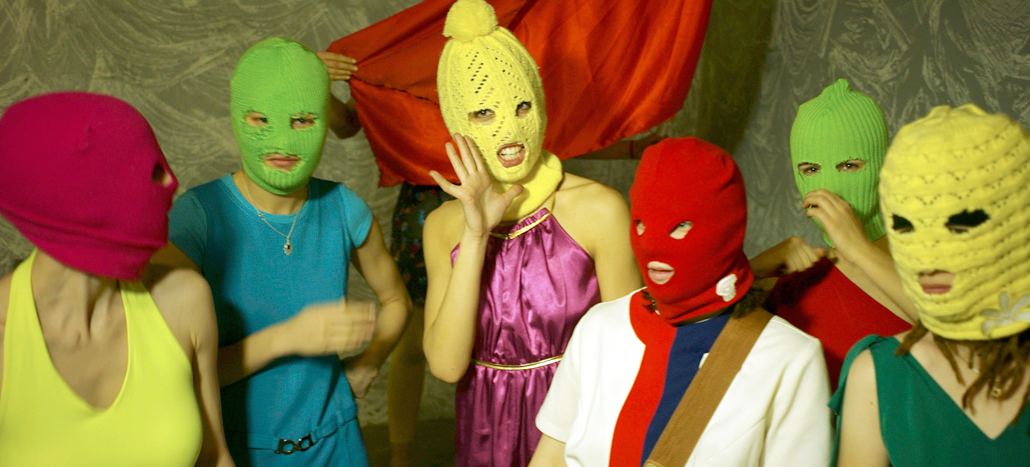
First it was a band, then it was a brand. Russian punk provocateurs Pussy Riot got their start in 2011 taking aim at the policies of President Vladimir Putin with elaborate guerilla-style theatrics. Since then, the collective’s neon ski masks and punk rock ethos — coupled with a few high-profile arrests for “hooliganism” — have turned Pussy Riot into a household name, even outside of Russia itself. The members of Pussy Riot have been interviewed on Vice, CNN, Charlie Rose and The Colbert Report. They even got an official endorsement from Madonna.
But while few brands should go as far as getting jailed for their campaigns, standing up to injustice and intolerance is always a good look. Here are a few lessons from Pussy Riot.
Cracking social media
“Russia is not China or Iran YET, so since we can still use Twitter, we will give a shot at running it in English, so hi to everyone here!” reads the first tweet in Pussy Riot’s new English language Twitter account, which the group opened on Wednesday. It has since attracted over 7,000 followers.
Pussy Riot is a brand well-suited for social media. Much of group’s early success was driven by the deliberately provocative nature of their name and music videos, according to a study from researchers at The University of Texas, Austin.The researchers said that Pussy Riot proved that being offensive often helps break through the noise of social media. That’s key for any movement focused on getting its message out to as many people as possible.
“I don’t think they would have gotten as big without social media,” said Michael Brito, group director at WCG. “Really, I’d say that 40 percent of products and services today wouldn’t exist before Twitter and Facebook. They’re amplifying everything,” he said.
Tapping into the zeitgeist
One of Pussy Riot’s most recent targets was the 2014 Sochi Winter Olympic Games, which the group saw as emblematic of Russia’s waste and corruption. Their video for the protest song “Putin Will Teach You How To Love the Motherland” was recorded in the city against the backdrop in front of some Olympic rings. It was Pussy Riot’s take on real-time marketing: The group saw a relevant event going on and responded by putting their own branded spin on it. This in spite of the fact that they had already been targeted by the Russian government.
“They were definitely in the right place at the right time,” Brito said. “Everybody’s talking about Russia and Ukraine, and Putin. If they were in a different country, I don’t think it would as big of a deal.”
Authenticity counts
Authenticity, which many brands attempt to shoehorn into campaigns, comes natural to Pussy Riot, whose members have been both beaten and imprisoned in the name of their cause. “People sense their realness and their passion and the fact that they take these personal risks,” said James White, a digital strategist who has worked with the likes of Random House for their Web campaigns. “The message, not the music, is the most important part of their brand.”
The power of the brand
Pussy Riot, despite the risque nature of its namesake, has lent itself well to brandability. While Pussy Riot itself has avoided the temptations of merchandizing, the brand has found itself on knockoff hats, iPhone cases, bumper stickers and coffee mugs. Even Madonna tried to exploit the name by selling $20 Pussy Riot t-shirts in her online store back in 2012. More recently, the brand’s pink ski masks even helped inspire posters for the 2013 film “Spring Breakers.”
“Anytime that you’ve got a pop culture phenomenon, there are going to be people trying to cash in on it,” White said. “It’s a brand, it’s very visible, and very organic.”
More in Marketing

Best Buy, Lowe’s chief marketing officers explain why they launched new influencer programs
CMOs launched these new programs in response to the growing importance of influencers in recommending products.

Agencies create specialist units to help marketers’ solve for AI search gatekeepers
Wpromote, Kepler and Jellyfish practices aim to illuminate impact of black box LLMs’ understanding of brands search and social efforts.

What AI startup Cluely gets — and ad tech forgets — about attention
Cluely launched a narrative before it launched a tool. And somehow, it’s working.





